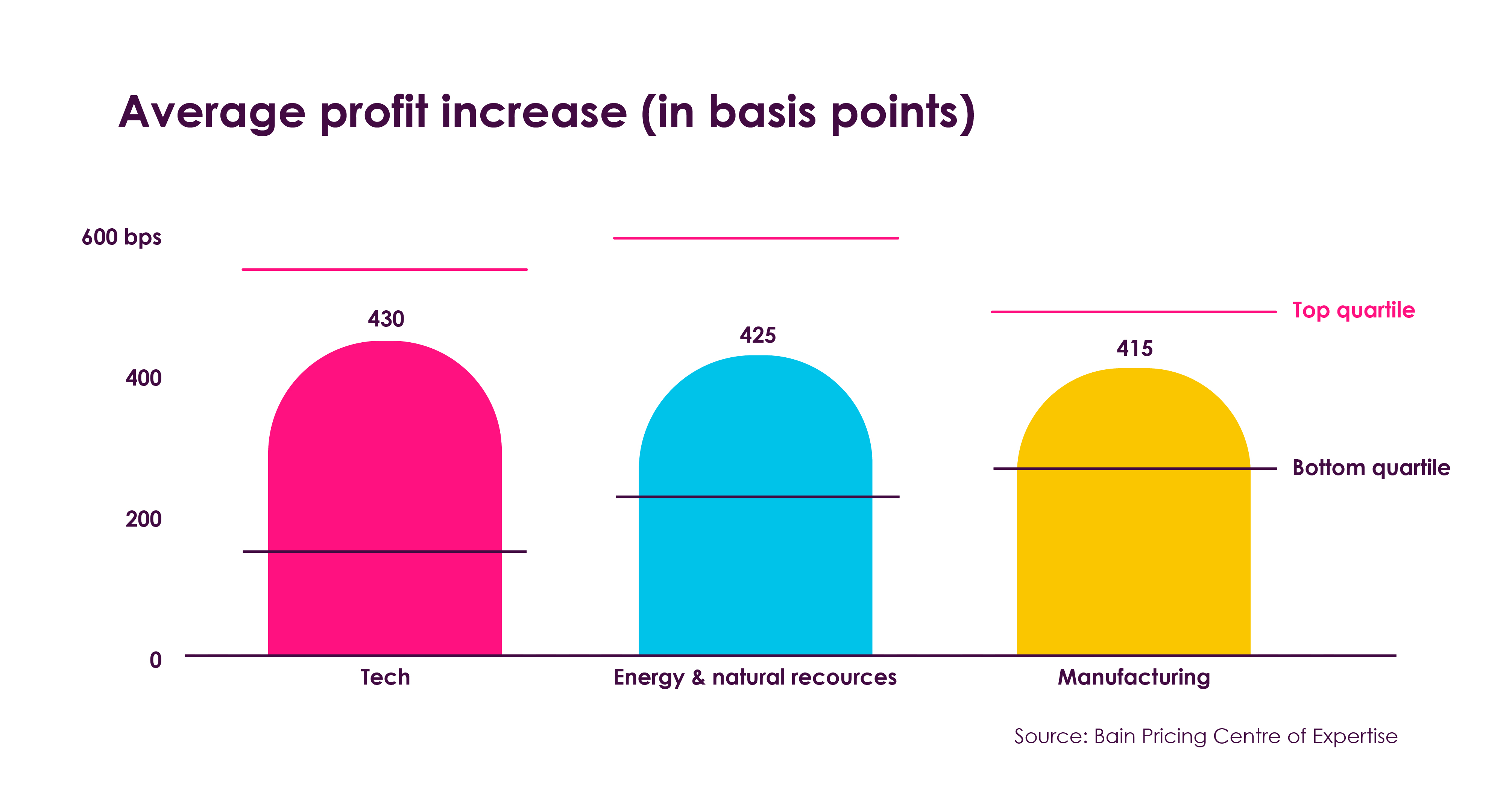Isn’t it a scary thought that 75% of S&P 500 incumbents will no longer be listed on the index by 2027? Due to slow or nonexistent evolvement, Standard & Poor’s data show that the evolution of corporate success has been dwindling for more than 50 years, stipulating that the average lifetime of an enterprise has decreased from 61 years in 1958 to just 18 years in 2011. Adaption and evolution are pertinent to the success of any enterprise, and no case of this being true is larger than the digitization of shopping.
From malls to iPhones, the development of e-commerce has been the funnel for the start and the end for countless brands and retailers. As e-commerce experiences its largest growth spurt in the last three years since 2020, creating the most competitive landscape the industry has ever faced, one factor for e-commerce success has remained strong and true: Price is the number-one profit driver. As correctly stated by Prof. Hermann Simon, the world’s leading expert on pricing and the founder of Simon-Kucher & Partners, just a 1% increase in prices can yield up to 10% in profit.
In this article, Omnia will discuss the importance of pricing for an enterprise’s long-term success and will display why a pricing strategy, coupled with a pricing software solution, is simply smart business development.
In inflationary times, pricing is the cornerstone for enterprise success
For decades, as one of the 7 P’s of marketing - a basic blueprint for retail and brand owners to launch successful products - pricing took a comfortable middle-child spot without enough attention being paid to it. The impressive and explosive trajectory of e-commerce in the last five to ten years has changed that.
However, it isn’t just the growth of e-commerce that has directed the light onto pricing, but the very nature of its competitiveness and oversaturation. Consumers have become king, experiencing more options to shop and more capabilities to compare. The retailer no longer enjoys the peace of mind of knowing the consumer has to come to them - quite the opposite. As the balance of power shifted to the consumer, brands and retailers began rubbing their hands together to strategise on how they can capture the customer once more.
As the other P’s (product, place, people, process, promotion and physical evidence) became less prominent as shopping moved to a web shop, pricing has become the top factor for consumers when choosing or abandoning a particular brand or retailer.
In 2023, following the effects of covid lockdowns, supply chain issues and record-high inflation, pricing is more influential than ever: McKinsey reports that price is at the top of the list of consumers’ motivations to change their spending behaviours. US consumers are switching brands and retailers now more than they did in 2020 and 2021 (33% versus 46%). Furthermore, in PwC’s 2023 Global Consumer Insights survey, 96% of consumers said they intend to adopt cost-saving behaviours over the next six months and 69% have already amended spending on non-essential items.
With price becoming so pertinent to consumer spending decisions in inflationary times, it becomes that much more vital for brands and retailers in e-commerce to stay ahead of market changes and conditions while driving revenue and profit upwards.
On the other end of the spectrum, it’s not simply consumer buying behaviour that has propelled the importance of price: If one analyses the last decade of e-commerce, it is the powerful monopoly of marketplaces like Amazon, Google Shopping, Zalando and eBay, as well as large D2C online stores, that have developed a sense of control and manipulation of pricing in multiple categories. From electronics to personal care and everything in between, vendors and D2C small-to-medium businesses (SMBs) are contending with lower prices on these giant platforms that they feel pressured to meet or beat. And, without expertise and the right tools, how can they? Amazon has 1.9 million SMBs worldwide as third-party sellers on its marketplace, and owns a 38% majority of the US’s e-commerce market share, showing just how influential one marketplace could be over the pricing of multiple categories. It then becomes imperative that enterprises have access to scraping data and robust pricing rules and technology to remain competitive in an industry largely dominated by marketplaces.
Talk to one of our consultants about dynamic pricing.

Mobilising pricing power
Considering how competitive and concentrated the e-commerce arena has become, with marketplaces like Amazon and Google Shopping dominating market conditions, while the D2C stream increases by double digits, how does an enterprise create a forward-thinking, data-driven pricing strategy? How does an enterprise know when to action that 1% price increase so fondly spoken of by Prof. Simon?
A Bain & Company global study shows that of the 1,700 retail leaders surveyed, 85% say management teams need to make smarter pricing decisions and only 15% believe they have effective price monitoring tools.
The gap is considerable.
However, as a McKinsey study suggests, incorporating AI-based pricing into retail pricing and promotion can add a valuable Dollar impact of between $106 million - $212 million, which may go a long way in easing the frustrations of the aforementioned business leaders, as well as their margins.
In addition, Boston Consulting Group (BCG) shared in a study of theirs that it may take as little as three months to see up to a 5% increase in profit by implementing optimised pricing. As Prof. Simon also said, “Profits are the cost of survival and the creators of new value,” but, are retail leaders ready to maximise this value that’s right in front of them for their brand and their customers? According to the same Bain & Company study, implementing “new pricing capabilities” can increase the average profit by between 200 - 600 basis points:

The crux of mobilising pricing power is knowing that it is not a once-off solution to fixing dismal profit margins, high sales team turnover and waning customer loyalty. Leadership needs to view pricing as the relationship is cannot get out of - and that’s a good thing. Developing pricing muscle and pricing maturity is a multi-year journey with an investment in data, automated processes and talent.
Building longevity in value
When one thinks about the kind of brain power, talent, hard work and almost indispensability a company may possess to reach the S&P 500 list, it seems inconceivable that a concept as elusive as adaption and evolvement could be its downfall. This goes to show how a simple mindset shift could be the deciding factor of stagnation and dissolution or growth and profitability. McKinsey shares that digitization “has less to do with technology and more with how companies approach development” and that when well executed, “it can unlock significant value by compressing timelines and eliminating duplication or inefficiencies.” As e-commerce technology advances and becomes more intelligent, it is unthinkable that one of the most critical and unpredictable factors - pricing - is not maintained manually. However, not only is the automation of pricing informed by competitor data and market insights necessary to demonstrably meet commercial goals, it is the partner in pricing, not just the software, that is needed.




